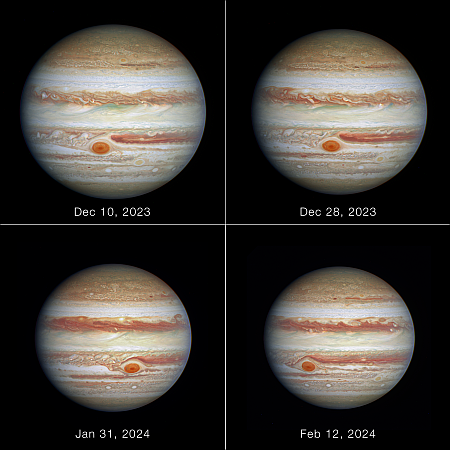October 11, 2024 Quick space links
Courtesy of BtB’s stringer Jay, except for the first, which came from several readers. This post is also an open thread. I welcome my readers to post any comments or additional links relating to any space issues, even if unrelated to the links below.
- FAA ends its grounding of SpaceX’s Falcon 9, allowing launches to proceed
No word yet on whether the FAA will issue a launch license for a Starship/Superheavy launch on October 13th. There will be a lot of Falcon 9 launches however beginning that day to catch up.
- Amazon’s Kuiper constellation appears to be negatively impacting the company’s recent profit margins
If only the company had moved with some speed and gotten these things launched quickly rather than dither for years while SpaceX grabbed the market.
- The consortium building Starlab space station completes a full scale mockup to test its design and usability
It is bringing in astronauts from the U.S. and Europe to give advice and suggestions.
- China successfully recovers a reusable Shijian capsule
Similar in concept to Varda’s commercial capsule, Shijian was used to test a variety of manufacturing technologies in weightlessness that could then be used on Earth.
- ISRO has booked all the remaining flights of its GSLV rocket
To quote the tweet: “Within the next decade, both PSLV & GSLV are going to retire, after which India’s launch demands are to be met by SSLV, LVM3, NGLV & private launchers.” The best plan would be to replace all the government launchers with private ones, but that seems unlikely considering the political strength of India’s bureaucracy.
- Today in 1846, Neptune’s largest moon Triton was discovered.
The tweet includes a photo of the moon taken by Voyager 2 in 1989.
Courtesy of BtB’s stringer Jay, except for the first, which came from several readers. This post is also an open thread. I welcome my readers to post any comments or additional links relating to any space issues, even if unrelated to the links below.
- FAA ends its grounding of SpaceX’s Falcon 9, allowing launches to proceed
No word yet on whether the FAA will issue a launch license for a Starship/Superheavy launch on October 13th. There will be a lot of Falcon 9 launches however beginning that day to catch up.
- Amazon’s Kuiper constellation appears to be negatively impacting the company’s recent profit margins
If only the company had moved with some speed and gotten these things launched quickly rather than dither for years while SpaceX grabbed the market.
- The consortium building Starlab space station completes a full scale mockup to test its design and usability
It is bringing in astronauts from the U.S. and Europe to give advice and suggestions.
- China successfully recovers a reusable Shijian capsule
Similar in concept to Varda’s commercial capsule, Shijian was used to test a variety of manufacturing technologies in weightlessness that could then be used on Earth.
- ISRO has booked all the remaining flights of its GSLV rocket
To quote the tweet: “Within the next decade, both PSLV & GSLV are going to retire, after which India’s launch demands are to be met by SSLV, LVM3, NGLV & private launchers.” The best plan would be to replace all the government launchers with private ones, but that seems unlikely considering the political strength of India’s bureaucracy.
- Today in 1846, Neptune’s largest moon Triton was discovered.
The tweet includes a photo of the moon taken by Voyager 2 in 1989.
















